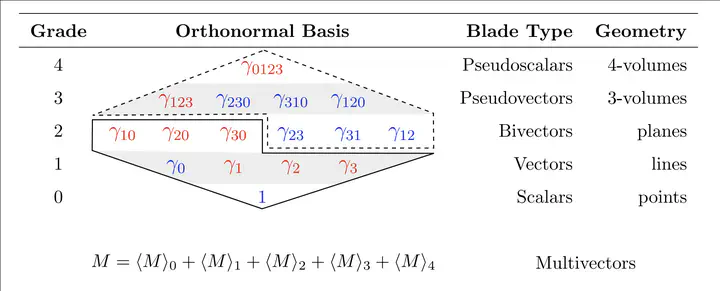
Abstract
We present a comprehensive introduction to spacetime algebra that emphasizes its practicality and power as a tool for the study of electromagnetism. We carefully develop this natural (Clifford) algebra of the Minkowski spacetime geometry, with a particular focus on its intrinsic (and often overlooked) complex structure. Notably, the scalar imaginary that appears throughout the electromagnetic theory properly corresponds to the unit 4-volume of spacetime itself, and thus has physical meaning. The electric and magnetic fields are combined into a single complex and frame-independent bivector field, which generalizes the Riemann-Silberstein complex vector that has recently resurfaced in studies of the single photon wavefunction. The complex structure of spacetime also underpins the emergence of electromagnetic waves, circular polarizations, the normal variables for canonical quantization, the distinction between electric and magnetic charge, complex spinor representations of Lorentz transformations, and the dual (electric-magnetic field exchange) symmetry that produces helicity conservation in vacuum fields. This latter symmetry manifests as an arbitrary global phase of the complex field, motivating the use of a complex vector potential, along with an associated transverse and gauge-invariant bivector potential, as well as complex (bivector and scalar) Hertz potentials. Our detailed treatment aims to encourage the use of spacetime algebra as a readily available and mature extension to existing vector calculus and tensor methods that can greatly simplify the analysis of fundamentally relativistic objects like the electromagnetic field.